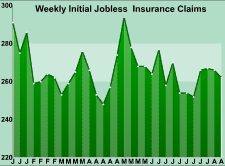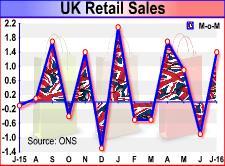Philadelphia-area manufacturing activity has seen tenuous growth in the month of August, according to a report released by the Federal Reserve Bank of Philadelphia on Thursday.
The Philly Fed said its diffusion index for current general activity climbed to a positive 2.0 in August from a negative 2.9 in July, with a positive reading indicating growth in regional manufacturing activity.
With the increase, which matched economist estimates, the Philly Fed Index showed just its third positive reading of the year.
However, the indicators for new orders and employment suggested continued general weakness in business conditions.
The new orders index tumbled to a negative 7.2 in August from a positive 11.8 in July, indicating a contraction in new orders.
The Philly Fed said the employment index also slumped to a negative 20.0 in August from a negative 1.6 in July, as the percentage of firms reporting decreases in employment significantly exceeded the percentage reporting increases.
Meanwhile, the report said the prices paid index jumped to 19.7 in August from 9.9 in July, while the prices received index rose to 7.1 from 0.3.
The survey's index of future manufacturing activity also surged up to 45.8 in August from 33.7 in July, strongly indicating that the current weakness is expected to be temporary.
On Monday, the New York Fed released a separate report unexpectedly showing a contraction in regional manufacturing activity in August.
The New York Fed said its general business conditions index fell to a negative 4.21 in August from a positive 0.55 in July. A negative reading indicates a contraction in New York manufacturing activity.
The decline by the index came as a surprise to economists, who had expected the index to climb to a positive 2.50.
by RTT Staff Writer
For comments and feedback: editorial@rttnews.com
Economic News
What parts of the world are seeing the best (and worst) economic performances lately? Click here to check out our Econ Scorecard and find out! See up-to-the-moment rankings for the best and worst performers in GDP, unemployment rate, inflation and much more.




